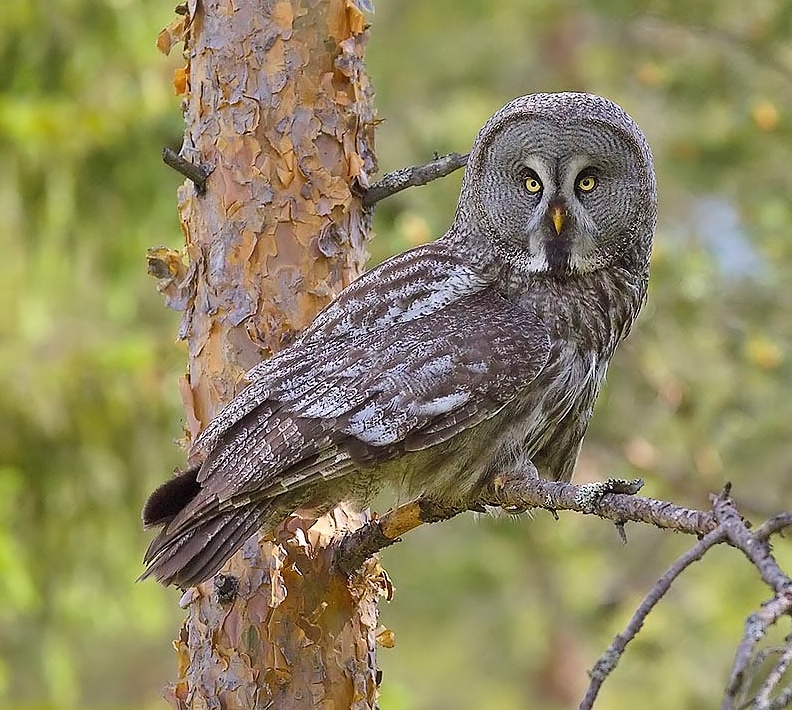 |
| Photo by Jari Peltomäki (Luonto Portti) |
Common name:
great grey owl (en); coruja-cinzenta (pt); chouette lapone (fr); carabo lapón (es); bartlauz (de)
Taxonomy:
Order Strigiformes
Family Strigidae
Range:
This species is widely distributed in the northern latitudes of Eurasia and North America. The subspecies S. n. nebulosa is found from Alaska, through most of Canada and into the western and extreme north-eastern United States. The subspecies S. n. lapponica is found from eastern Poland and Sweden, through most of Russia and into northern Kazakhstan, Mongolia and extreme north-eastern China.
Size:
These large owls are 61-84 cm long and have a wingspan of 137-152 cm. They weigh 790-1450 g.
Habitat:
The great grey owl is mostly found in boreal coniferous forests, especially in the taiga near the edge of the Arctic treeline, but also hunts over boreal scrublands and grasslands, tundra, bogs and swamps and occasionally in pastures. They are present from sea level up to an altitude of 3.200 m.
Diet:
They hunt mainly during early morning and late afternoon, but also during the night and occasionally during the day. They feed mainly on small rodents, especially shrews and voles, but also other small mammals, birds such as crows, small hawks and ducks, amphibians, snakes and some insects.
Breeding:
Great grey owls breed in March-August. They are monogamous and nest in stick nests built by other birds, such as hawks, ravens or crows, also using artificial platforms and occasionally nesting on the ground. The nest is lined with conifer needles, deer hair, moss and shredded bark. The female lays 2-5 dull white eggs, which she incubates alone for 28-36 days while being fed by the male. The chicks are fed by both parents and leave the nest 25-30 days after hatching, but only start flying 1-2 weeks later. The male is responsible for feeding them after they leave the nest. They reach sexual maturity at 1-3 years of age.
Conservation:
IUCN – LC (Least Concern)
This species has an extremely large breeding range and the global population is estimated at 50.000-100.000 individuals. The population trend in likely to be fluctuating, although large increases have been recorded in parts of North America in recent decades.







